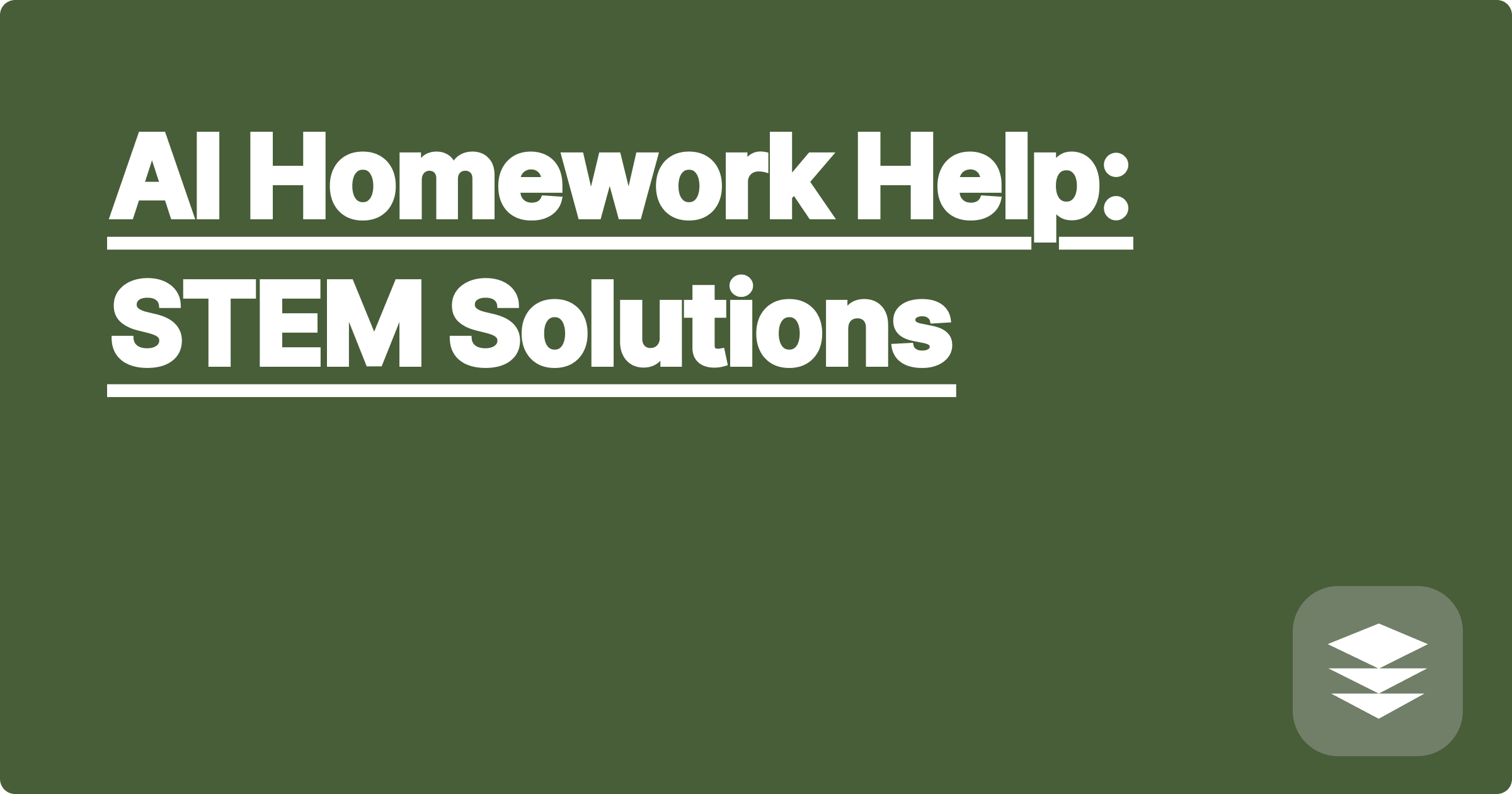
The demanding nature of STEM fields often presents a significant challenge for students and researchers alike. Complex problem sets, intricate formulas, and vast amounts of data can feel overwhelming. Fortunately, the rise of artificial intelligence offers a powerful set of tools to navigate these challenges. AI can provide support in understanding complex concepts, automating tedious tasks, and even generating novel solutions, thereby empowering STEM learners and researchers to reach new heights of understanding and innovation.
This emerging landscape of AI-powered assistance is particularly relevant for STEM students and researchers facing increasingly complex problems. Mastering these tools can significantly improve learning outcomes, accelerate research progress, and unlock new possibilities within various STEM disciplines. Embracing AI as a collaborative partner can not only alleviate the burden of challenging tasks but also foster deeper understanding and ignite a passion for exploration and discovery within the STEM fields.
STEM fields often involve grappling with intricate problems that require a deep understanding of underlying principles and the ability to apply them in novel ways. These challenges can range from solving complex differential equations in physics to designing efficient algorithms in computer science, or analyzing large datasets in biology. Often, students and researchers encounter roadblocks in understanding core concepts or struggle to translate theoretical knowledge into practical application. Furthermore, the sheer volume of information and the rapid pace of advancements in STEM fields can make it difficult to stay abreast of the latest developments and techniques. This can lead to frustration, decreased motivation, and ultimately hinder progress in learning and research. The complexity of these challenges underscores the need for effective tools and strategies to support STEM learners and researchers in overcoming these obstacles and achieving their academic and professional goals.
AI tools like ChatGPT, Claude, and Wolfram Alpha offer a transformative approach to tackling these challenges. ChatGPT and Claude, for example, can be used to clarify complex concepts by providing detailed explanations, generating examples, and answering specific questions in a conversational manner. They can also assist in brainstorming solutions, outlining research papers, and even generating code snippets in various programming languages. Wolfram Alpha, on the other hand, excels at computational tasks, providing step-by-step solutions to mathematical problems, visualizing complex functions, and offering access to a vast database of scientific information. By leveraging these AI tools strategically, STEM students and researchers can gain a deeper understanding of complex concepts, automate tedious tasks, and accelerate their learning and research process.
Let's consider an example of using ChatGPT to understand a challenging concept in calculus: the chain rule. First, you would clearly articulate your question to ChatGPT, such as, "Explain the chain rule in calculus and provide an example." Next, ChatGPT will generate a response that explains the concept in detail, often providing analogies or real-world examples to aid understanding. You can then follow up with more specific questions, such as, "Can you show me how to apply the chain rule to the function f(x) = sin(x^2)?" ChatGPT will then generate a step-by-step solution, showing the application of the chain rule and explaining each step in the process. This interactive approach allows for a personalized learning experience, enabling you to delve deeper into specific areas where you need clarification.
Consider the following example: You are tasked with solving the integral of xcos(x^2) dx. You could use Wolfram Alpha by simply typing "integrate xcos(x^2) dx" into the input field. Wolfram Alpha would then not only provide the solution, (1/2)sin(x^2) + C, but also show the steps involved in the integration process, including the use of u-substitution. Another example involves using ChatGPT to generate Python code for a specific task. You could ask ChatGPT, "Write a Python function to calculate the factorial of a number." ChatGPT would then generate the code, which you can then adapt and integrate into your project. These examples demonstrate the practical utility of AI tools in solving real-world STEM problems and automating tedious tasks.
Integrating AI tools into your workflow requires a strategic approach. First, it's crucial to develop strong foundational knowledge in your respective STEM field. AI should be used as a supplement to, not a replacement for, traditional learning methods. Second, learn to formulate clear and specific prompts when interacting with AI tools. The quality of the output is directly related to the clarity of the input. Third, always critically evaluate the information provided by AI. While these tools are powerful, they are not infallible. Cross-referencing information with reliable sources is essential. Finally, remember that ethical considerations are paramount. Using AI responsibly and avoiding plagiarism is crucial for maintaining academic integrity.
To effectively integrate AI into your STEM studies and research, start by exploring the capabilities of different AI tools. Experiment with various prompts and learn to refine your questioning techniques. Focus on developing a deep understanding of the underlying concepts and principles of your field. Use AI as a tool to enhance your learning and research process, not as a shortcut. By embracing these strategies, you can harness the power of AI to achieve academic success and contribute to the advancement of STEM fields.
Ace STEM Exams: AI Study Planner
AI Homework Help: STEM Solutions
AI for Labs: Data Analysis Made Easy
STEM Exam Prep: AI-Powered Tutor
AI in Engineering: Design Optimization
Solve STEM Problems: AI Assistant
AI for Research: Data Visualization